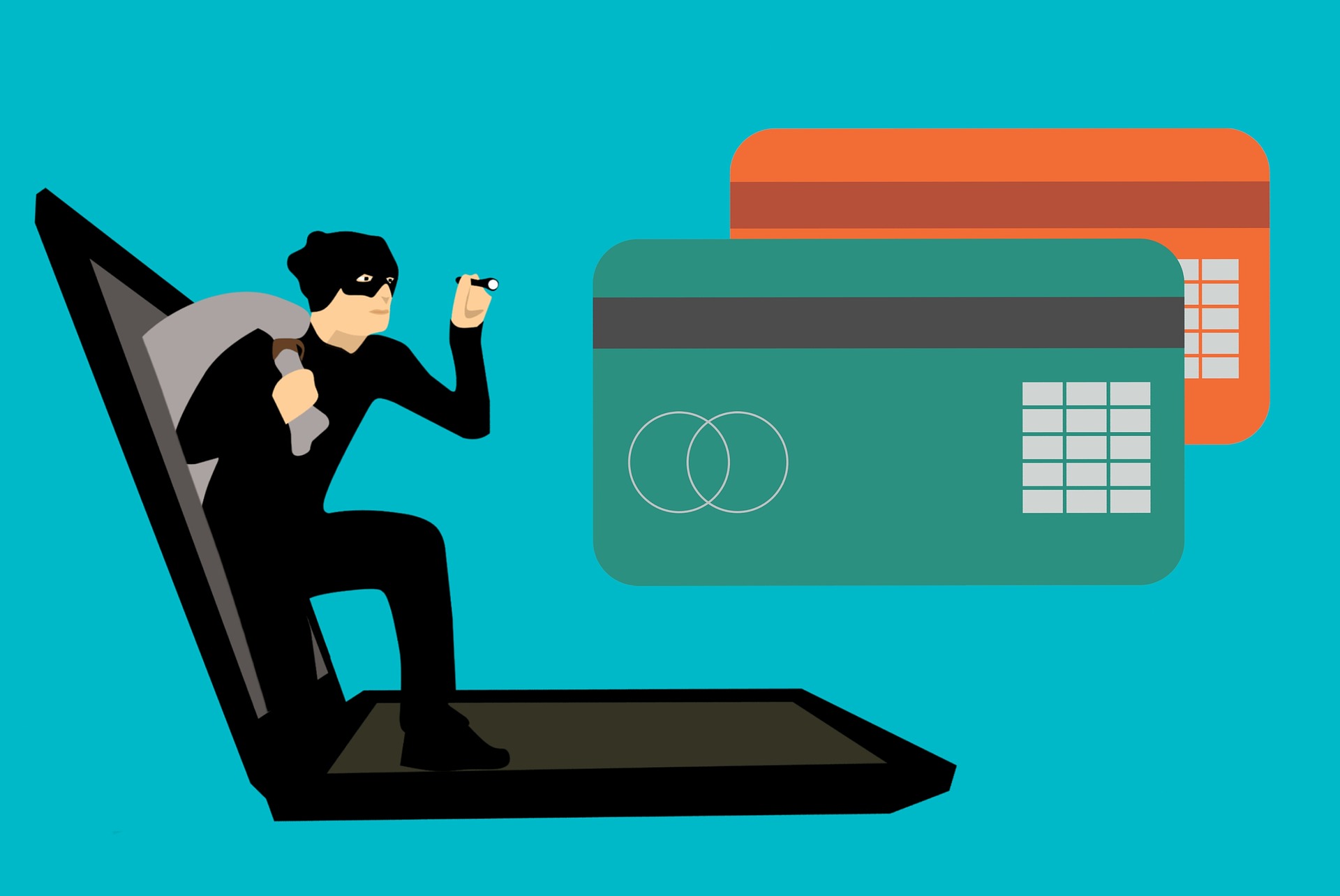Creating and Selling Online Courses: Sharing Your Expertise and Building Revenue
In today’s digital age, where knowledge is currency and accessibility reigns supreme, online courses have emerged as a powerful tool for both passionate experts and aspiring entrepreneurs. They offer a unique opportunity to share your expertise with a global audience, build a community around your niche, and generate a sustainable income stream. If you’ve ever considered sharing your knowledge and passion with the world, creating and selling online courses could be your perfect next step.
Why Create an Online Course?
The reasons to embark on this journey are numerous. Perhaps you’re a seasoned professional eager to systematize your knowledge and make it accessible to a wider audience. Maybe you’re a skilled hobbyist with a unique talent you want to share. Or perhaps you simply enjoy teaching and helping others achieve their goals. Regardless of your motivation, here are some of the key benefits of creating and selling online courses:
- Share your passion: Transform your expertise into a valuable resource that empowers others.
- Build a community: Connect with students who share your interests and create a space for learning and interaction.
- Generate income: Create a passive income stream that rewards you for your efforts.
- Establish authority: Position yourself as a thought leader in your field and gain recognition for your expertise.
- Flexible schedule: Work on your course at your own pace and convenience, fitting it around your existing commitments.

Finding Your Niche and Understanding Your Audience:
Before diving headfirst into content creation, it’s crucial to identify your niche and understand your target audience. This involves introspection and market research. Ask yourself:
- What are you passionate and knowledgeable about? What skills or experiences can you confidently teach?
- Who is your ideal student? What are their demographics, goals, and pain points?
- What existing courses address this niche? How can you differentiate your offering?
By conducting thorough research, you’ll ensure your course fills a genuine need and resonates with your target audience. This research will also guide your content creation, marketing strategy, and pricing decisions.
Crafting Compelling Course Content:
The quality of your content is the cornerstone of your course’s success. Focus on creating well-structured, engaging, and informative modules that effectively deliver your message. Some key considerations include:
- Format: Videos, text, quizzes, audio, and interactive elements can be combined to create a dynamic learning experience.
- Structure: Organize your content into logical modules with clear objectives and outcomes.
- Presentation: Utilize high-quality visuals, audio, and storytelling techniques to keep students engaged.
- Delivery: Clearly explain concepts, provide practical examples, and offer actionable takeaways.

Remember, your course should be valuable, informative, and enjoyable to navigate. Invest time in refining your content and ensuring it provides a superior learning experience.
Choosing a Platform and Setting the Right Price:
Several online platforms like Udemy, Teachable, and Thinkific offer tools and infrastructure for hosting and selling your course. Evaluate each platform based on features, pricing, audience reach, and ease of use.
Determining the right price requires a balance between covering your costs and offering value to your audience. Consider the course’s length, depth, target audience, and competitor pricing to find a sweet spot. You can also explore different pricing models like subscriptions, bundles, or early bird discounts.
Marketing and Selling Your Course:
Building awareness and attracting students is crucial for course success. Utilize various marketing channels, including:
- Social media: Engage with your target audience on relevant platforms and share valuable content related to your course topic.
- Email marketing: Build an email list and nurture leads with valuable content and course updates.
- Content marketing: Create blog posts, articles, or videos that showcase your expertise and attract potential students.
- Paid advertising: Consider targeted ads on social media or search engines to reach a wider audience.
- Collaborations: Partner with complementary businesses or influencers to reach new audiences.
Remember, marketing is an ongoing process. Analyze your results, experiment with different strategies, and adapt your approach to maximize reach and enrollment.
Building a Sustainable Business:
Creating and selling online courses is a marathon, not a sprint. Be prepared to invest time, effort, and resources into nurturing your course and community. Here are some key practices for long-term success:
- Gather feedback: Continuously solicit feedback from students and use it to improve your course content and delivery.
- Engage with your community: Foster interaction within your student base through forums, Q&A sessions, and live events.
- Update your content: Regularly refresh your course with new information, trends, and bonus materials to maintain its relevance.
- Expand your offerings: Consider creating additional courses, memberships, or resources to cater to your growing audience.
E-commerce Entrepreneurship: Launching and Scaling Your Online Store
The landscape of commerce is undergoing a tectonic shift. Brick-and-mortar stores, though not obsolete, are steadily sharing space with their digital counterparts, and e-commerce entrepreneurship is thriving. With just a computer and an internet connection, you can create a global store, reaching customers across continents and bypassing geographical limitations. But the journey from aspiring entrepreneur to successful online store owner requires careful planning, strategic execution, and a dash of adaptability. This guide will equip you with the knowledge and tools to launch and scale your e-commerce venture, transforming your dream into a thriving online business.
Laying the Foundation: Choosing Your Niche and Building Your Brand
- Identifying Your Niche: The first step is finding a profitable niche within the vast e-commerce ocean. Consider your interests, skills, and market trends. Analyze existing competition and identify gaps you can fill. Look for unique products, underserved demographics, or specialized categories with passionate customer bases. Remember, a niche doesn’t have to be small; it just needs to be well-defined and have potential for growth.
- Building Your Brand: Your brand is more than just a logo and a name; it’s the personality and values that differentiate you from competitors. Define your brand identity, including your mission, target audience, and core values. Craft a brand story that resonates with your customers and reflects your unique offering. Consistency is key, so ensure your brand identity is evident in all aspects of your online store, from design and messaging to customer service.

Crafting Your Digital Storefront: The Website That Sells
- Platform Selection: Choosing the right e-commerce platform is crucial. Popular options include Shopify, WooCommerce, Wix, and Squarespace. Each platform caters to different needs and budgets. Consider factors like scalability, ease of use, features, and pricing before making your decision.
- Website Design and User Experience: Your website is your online salesperson, so its design and functionality are paramount. Prioritize a user-friendly interface with clear navigation, high-quality product images, detailed descriptions, and a seamless checkout process. Optimize your website for mobile devices, as a significant portion of online shopping happens on smartphones.
- Content is King: Compelling content breathes life into your online store. Create informative product descriptions, engaging blog posts, and captivating product stories. Utilize high-quality images and videos to showcase your products and highlight their features and benefits. Remember, SEO-optimized content not only attracts organic traffic but also helps potential customers find your store online.
Marketing Magic: Attracting and Engaging Customers
- SEO Optimization: Search engine optimization (SEO) ensures your store ranks high in search engine results pages (SERPs) for relevant keywords. Conduct keyword research to identify terms your target audience uses and optimize your website content, product descriptions, and meta tags accordingly.
- Social Media Marketing: Leverage the power of social media platforms like Instagram, Facebook, and TikTok to connect with your target audience. Share engaging content, run targeted ads, and participate in relevant conversations to build brand awareness and drive traffic to your store.
- Email Marketing: Build an email list and nurture relationships with your subscribers through targeted email campaigns. Offer exclusive promotions, share valuable content, and personalize your messages to create a loyal customer base.
- Pay-Per-Click (PPC) Advertising: Consider investing in PPC ads to reach a wider audience quickly. Platforms like Google Ads and Facebook Ads offer granular targeting options, allowing you to reach potential customers based on demographics, interests, and online behavior.

Operational Excellence: Streamlining Your Processes
- Inventory Management: Efficient inventory management is crucial for smooth operations. Utilize inventory management software to track stock levels, prevent overstocking or understocking, and optimize fulfillment processes.
- Payment Processing: Choose a secure and reliable payment gateway to process customer transactions. Popular options include Stripe, PayPal, and Square. Make sure your payment gateway integrates seamlessly with your chosen e-commerce platform and offers transparent fees and transaction details.
- Shipping and Fulfillment: Decide on your shipping and fulfillment strategy. Options include self-fulfillment, dropshipping, or outsourcing to a fulfillment center. Consider factors like shipping costs, delivery times, and order volume when making your decision.
- Customer Service: Excellent customer service is essential for building trust and fostering customer loyalty. Respond promptly to inquiries, address concerns efficiently, and go the extra mile to exceed expectations. Utilize tools like chatbots and FAQs to offer 24/7 support and streamline customer interactions.
Starting a Blog: From Passion Project to Profitable Business
The internet hums with countless blogs, each a unique voice vying for attention in the vast digital landscape. Some are personal diaries, others vibrant communities, and many harbor dreams of becoming profitable businesses. This guide delves into the exciting journey of transforming your passion project into a viable source of income, exploring the steps, strategies, and secrets to success.
Finding Your Niche: Passion with Potential
The foundation of any blog is a captivating theme that resonates with both you and your target audience. This sweet spot lies at the intersection of your interests and a market with potential. Do you have a knack for baking exquisite pastries? Share mouthwatering recipes and target food enthusiasts. Are you a coding whiz? Offer tutorials and cater to aspiring programmers. Remember, passion fuels your journey, so choose a topic that excites you, one you can write about consistently and enthusiastically.
Building Your Digital Dwelling: The Power of the Platform
Once you’ve identified your niche, it’s time to construct your online home. Popular platforms like WordPress offer user-friendly interfaces and extensive customization options. Consider factors like scalability, design flexibility, and community support when making your choice. Remember, your blog is an extension of your brand, so invest time in crafting an aesthetically pleasing and user-friendly experience.

Content is King: Captivating Your Audience
The lifeblood of any blog is its content. Strive to create informative, engaging, and valuable pieces that resonate with your target audience. Research relevant keywords, analyze trending topics, and inject your unique voice and perspective. Experiment with different formats – in-depth articles, insightful reviews, captivating narratives – to keep your readers hooked. Consistency is key: establish a regular publishing schedule and stick to it to build anticipation and loyalty.
Optimizing for Visibility: The SEO Advantage
In the crowded blogosphere, discoverability is crucial. Search Engine Optimization (SEO) ensures your content ranks higher in search results, attracting organic traffic. Learn SEO basics like keyword research, on-page optimization, and link building. While technical aspects are important, remember that high-quality, relevant content remains the cornerstone of good SEO.
Building Community: Beyond One-Way Communication
A successful blog fosters a sense of community. Encourage reader interaction through comments, polls, and Q&A sessions. Respond to feedback, answer questions, and actively engage with your audience. Social media platforms are powerful tools for connecting with readers, promoting your content, and expanding your reach. Foster discussions, share behind-the-scenes glimpses, and run interactive contests to cultivate a vibrant community around your blog.

Monetizing Your Passion: Exploring the Options
There are multiple ways to turn your blog into a profitable venture. Affiliate marketing lets you earn commissions by promoting other companies’ products or services relevant to your niche. Display advertising allows you to place ads on your blog, earning revenue based on impressions or clicks. Selling your own products, like ebooks, courses, or merchandise, leverages your expertise and builds brand loyalty. Remember, building trust and providing value are paramount before focusing solely on monetization.
The Long Game: Patience and Perseverance
Building a successful blog takes time, dedication, and consistent effort. Don’t be discouraged by slow initial growth. Stay focused on creating high-quality content, engaging with your audience, and constantly learning and adapting. Analyze your blog’s performance regularly, track key metrics, and experiment with different strategies to see what resonates with your readers. Remember, Rome wasn’t built in a day, and neither is a thriving blog. Embrace the journey, celebrate small wins, and enjoy the process of growing your online presence.
Beyond the Basics: Advanced Strategies for Growth
As your blog matures, explore advanced strategies to accelerate growth. Guest blogging on other relevant websites helps you reach new audiences and establish your expertise. Collaboration with other bloggers can lead to cross-promotion and content creation opportunities. Consider utilizing email marketing to build an engaged subscriber base and nurture relationships with your readers.
Remember, Your Blog is Your Brand
Throughout your journey, remember that your blog is more than just a collection of posts; it’s an extension of your brand. Be authentic, transparent, and consistent in your voice and message. Build trust with your audience, establish yourself as a thought leader in your niche, and always strive to provide value. By following these steps, embracing continuous learning, and staying passionate about your topic, you can transform your blog from a labor of love into a thriving, profitable business.
Bonus Tip: Never underestimate the power of community. Connect with other bloggers, learn from their experiences, and offer support in return. The blogging world is full of passionate individuals who can be valuable allies on your journey.
Freelancing for Beginners: Finding Gigs and Building Your Online Portfolio
The freedom and flexibility of freelancing attract many aspiring individuals looking to chart their own career paths. But diving into the world of independent work can seem daunting, especially for beginners. This guide empowers you to take that first step by exploring two crucial aspects: securing your initial gigs and constructing a stellar online portfolio.
Finding Your First Gigs:
- Know Your Niche:
Before embarking on your freelance journey, define your niche. What unique skills and experiences do you offer? Are you a graphic designer specializing in logo creation? A content writer adept at crafting engaging blog posts? Pinpointing your niche helps you target relevant clients and positions you as an expert in your field.
- Explore Multiple Platforms:
Don’t limit yourself to a single job board. Explore diverse platforms like Upwork, Fiverr, Freelancer, and niche-specific marketplaces like ProBlogger for writing or Toptal for developers. Consider social media groups where potential clients may post inquiries. Building a presence on platforms like LinkedIn helps build connections and attract opportunities.
- Start with Smaller Projects:
While landing a dream project right away is ideal, smaller gigs can be stepping stones. Offer competitive rates for initial projects to build your reputation and client testimonials. These smaller projects offer valuable experience and allow you to refine your skills while showcasing your professionalism.

- Network Actively:
The power of personal connections cannot be understated. Attend industry events, conferences, and online communities to connect with potential clients and collaborators. Network with established freelancers who can offer guidance and advice. Building genuine relationships can lead to referrals and long-term clients.
- Leverage Cold Emailing:
Strategically identify companies or individuals who might benefit from your services. Craft personalized emails highlighting your niche expertise and the specific value you offer. While cold emailing requires effort, it can yield surprising results and open doors to exciting collaborations.
Building Your Online Portfolio:
- Select Your Best Work:
Quality over quantity is key. Choose projects that showcase your diverse skills and target audience relevance. Include work demonstrating your problem-solving skills and the positive impact you had on past clients. Tailor your portfolio to specific niches you wish to attract.
- Create a Stunning Visual Presentation:
Invest in a professional website or online portfolio platform. Ensure a clean, user-friendly layout that reflects your personal brand. Utilize high-quality visuals and compelling descriptions for each project, highlighting the challenges addressed and the solutions delivered.

- Include Relevant Details:
Don’t just showcase your work; tell the story behind it. Describe the project scope, your specific contributions, and the positive outcomes achieved. Quantify your impact whenever possible, using metrics like increased website traffic or improved conversion rates.
- Gather Client Testimonials:
Testimonials offer social proof and build trust with potential clients. Request feedback from satisfied clients and incorporate their praises into your portfolio. Consider showcasing video testimonials for added impact.
- Continuously Update and Refine:
Your portfolio is a living document. Regularly add new projects and remove outdated ones. Keep your contact information and website links updated. Respond promptly to inquiries and showcase your responsiveness and professionalism.
Bonus Tips:
- Develop a compelling personal brand: Your portfolio is an extension of your brand. Use consistent visuals, messaging, and tone across all platforms.
- Offer free consultations: Provide potential clients with a free consultation to discuss their needs and showcase your expertise. This builds trust and increases their likelihood of hiring you.
- Invest in skill development: Stay ahead of the curve by continuously learning and mastering new skills relevant to your niche.
- Join online communities: Engage with other freelancers for support, collaboration, and learning opportunities.
Remember, building a successful freelance career takes time and dedication. By actively seeking gigs, crafting a compelling portfolio, and continuously honing your skills, you can transform your freelance dreams into a fulfilling and rewarding reality.
Passive Income Ideas for the Digital Age: Generating Revenue While You Sleep
The digital age has revolutionized the way we work and earn, opening up exciting possibilities for generating income without being chained to a traditional job. Passive income streams offer the allure of earning money while you sleep, travel, or pursue other interests. While it’s important to temper expectations (building passive income usually requires effort upfront), these ideas can provide a financial safety net or even become your primary source of income.
Content Creation:
- Blogs: Share your expertise or passion through a blog, attracting readers through valuable content and SEO optimization. Monetize through advertising, affiliate marketing, sponsored posts, or selling your own products or services.
- YouTube Channel: Build an audience by creating engaging videos on various topics. Once you reach a critical mass of subscribers, you can earn through advertising, sponsorships, selling merchandise, or promoting affiliate products.
- Ebooks and Online Courses: Package your knowledge into ebooks, guides, or online courses. Sell them on platforms like Udemy or your own website. Consider ongoing subscriptions for exclusive content or community access.
- Stock Photos and Music: If you have a knack for photography or music composition, sell your creations through stock photo/music websites. Every download earns you a commission, creating passive income for years to come.

Digital Products and Services:
- Printables and Templates: Design and sell downloadable planners, checklists, worksheets, or templates catering to specific needs. Platforms like Etsy or Gumroad make selling easy.
- Software and Mobile Apps: Develop and sell software or mobile apps that solve a problem or offer entertainment. Ongoing subscriptions or in-app purchases can create recurring income.
- Membership Sites: Create exclusive content, communities, or resources accessible through paid memberships. This model works well for niche audiences with specific interests.
- Freelance Writing and Editing: Offer your writing or editing skills on freelance platforms like Upwork or Fiverr. While not entirely passive, repeat clients and automated project delivery can streamline income.
Investing and Rentals:
- Dividend-Paying Stocks: Invest in companies known for regular dividend payouts, providing passive income over time. Research carefully and diversify your portfolio for stability.
- Peer-to-Peer Lending: Loan money to individuals or businesses through online platforms like LendingClub, earning interest on the loaned amount. Understand the risks involved and set clear lending criteria.
- Rental Properties: Rent out a spare room, apartment, or vacation property. While requiring active management initially, it can generate consistent passive income over the long term.
- Car Sharing: Rent out your car when you’re not using it through platforms like Turo. This can be a good option if you live in an urban area with high car-sharing demand.

Other Creative Avenues:
- Affiliate Marketing: Promote other companies’ products or services on your website or social media. Earn commissions for every sale generated through your unique affiliate link.
- Self-Publishing: Write and publish books on Amazon Kindle Direct Publishing (KDP). Every book sale generates royalties, creating passive income with each download.
- Blogging for Ad Revenue: Display ads on your blog through Google AdSense or other networks. While income depends on traffic and ad clicks, it can be a passive earner with established readership.
- Create and Sell Crafts or Art: Sell your handmade crafts or artwork online through Etsy, your website, or social media. Consider offering subscriptions for exclusive access to new creations.
Remember:
- Building passive income takes time and effort: Don’t expect instant riches. Be prepared to invest upfront in creating content, building an audience, or marketing your product/service.
Avoiding Affiliate Marketing Scams: Protecting Yourself from Fraudulent Programs and Practices
The allure of affiliate marketing is undeniable. The potential to earn passive income by promoting other companies’ products or services can be a tempting proposition. However, amidst the legitimate opportunities, lurks the shadow of scams designed to exploit unsuspecting individuals. This guide equips you with the knowledge and tools to navigate the affiliate marketing landscape, protecting yourself from fraudulent programs and practices.
Red Flags: Spotting the Scam Before You Sign Up
Before diving headfirst into any affiliate program, take a step back and assess its legitimacy. Here are some red flags to watch out for:
- Guaranteed High Earnings: Promises of quick and easy money with minimal effort are classic hallmarks of a scam. Legitimate affiliate marketing requires dedication and work to build an audience and generate conversions.
- Upfront Fees: Reputable programs rarely charge joining fees. Be wary of programs demanding upfront investment, as this suggests they’re more interested in your money than your marketing skills.
- Unrealistic Products or Services: If the promoted products seem too good to be true, they probably are. Do your research on the company and its offerings before promoting them.
- Vague Terms and Conditions: Programs with unclear payout structures, complicated cancellation policies, or hidden clauses raise suspicion. Always thoroughly read and understand the terms before joining.
- Excessive Hype and Testimonials: Beware of programs relying heavily on testimonials that seem fabricated or lack verification. Genuine programs speak for themselves through transparent practices and satisfied affiliates.

Beyond the Red Flags: Deeper Due Diligence
Don’t stop at just identifying red flags. Conduct thorough research before joining any program:
- Investigate the Company: Research the company’s reputation, online reviews, and customer complaints. Are they known for scams or unethical practices?
- Check the Product/Service: Evaluate the quality and legitimacy of the product or service being promoted. Does it seem reliable and beneficial to your target audience?
- Review the Affiliate Program Details: Scrutinize the program’s payout structure, payment terms, cookie duration, and tracking methods. Understand how and when you’ll get paid.
- Engage with Existing Affiliates: Connect with other affiliates and get their honest feedback. Are they satisfied with the program’s performance and support?
Protecting Yourself Throughout Your Affiliate Journey
Even after joining a seemingly legitimate program, vigilance is key:
- Monitor Your Activity: Regularly track your commissions, clicks, and conversions. Do they align with your expectations and effort?
- Be Wary of Incentives: Beware of programs offering rewards for unethical practices like spamming or clickbaiting. Stick to organic and genuine marketing methods.
- Report Suspicious Activity: If you encounter anything suspicious, report it directly to the program administrator and consider severing ties with the program.

Beyond Protection: Choosing Ethical Programs
As an affiliate marketer, you have the power to promote products and services that align with your values and contribute positively to the online ecosystem. Choose programs that:
- Offer high-quality products or services: Promote offerings that genuinely benefit your audience, building trust and credibility.
- Provide transparent support: Opt for programs with readily available and helpful support for affiliates facing issues.
- Comply with ethical practices: Choose programs that value fair compensation, accurate tracking, and responsible marketing methods.
By understanding the potential pitfalls and actively seeking out ethical opportunities, you can navigate the world of affiliate marketing with confidence and contribute to a thriving and trustworthy online environment. Remember, true success in affiliate marketing is built on trust, transparency, and ethical practices, not quick scams and empty promises.
Passive Income Pathways: E-books, Courses, and More – Setting Up Automated Revenue Streams
In today’s dynamic world, the allure of passive income – income generated with minimal ongoing effort – is stronger than ever. It promises financial freedom, flexibility, and a break from the traditional 9-to-5 grind. While it’s not a get-rich-quick scheme, building passive income streams can be a powerful tool for financial security and achieving your lifestyle goals. This article explores two popular options: e-books and online courses, along with additional pathways to consider as you pave your path to financial peace of mind.
E-books: Sharing Your Knowledge, One Book at a Time
Potential: E-books offer a versatile way to share your expertise and reach a global audience. Whether you’re a seasoned writer, a niche expert, or simply passionate about a specific topic, there’s a book waiting to be written. Popular subjects include personal development, health and wellness, business & finance, hobbies, and creative non-fiction.
Getting Started:
- Choose your niche: Identify a topic you’re knowledgeable and passionate about, with enough depth for a book-length exploration.
- Research and planning: Conduct thorough research to ensure your content is unique, valuable, and addresses your target audience’s needs.
- Writing and editing: Invest time in crafting clear, engaging content. Utilize professional editing and proofreading services for a polished finish.
- Publishing platforms: Choose a platform like Amazon Kindle Direct Publishing (KDP) or IngramSpark for self-publishing, or explore traditional publishing options.
- Marketing and promotion: Build an author platform through social media, email marketing, and targeted advertising to reach your audience.
Beyond the Initial Effort:
Once your e-book is published, the passive income potential kicks in. Each sale generates royalties, and ongoing marketing efforts can sustain sales over time. Consider offering bonuses, bundling your e-book with other products, or translating it into different languages to expand your reach.
Online Courses: Teaching From Afar
Potential: Online courses provide a scalable way to monetize your expertise by teaching valuable skills or knowledge. Platforms like Udemy, Skillshare, and Teachable offer diverse tools and features to create and manage your courses.
Getting Started:
- Define your course theme: Identify a skill or knowledge area you’re qualified to teach, with clear learning outcomes for your students.
- Course structure and content: Develop engaging learning modules with video lectures, downloadable resources, and interactive elements.
- Production and editing: Invest in high-quality audio and video equipment, and utilize editing software to create professional-looking content.
- Platform selection: Choose a platform that aligns with your budget, technical expertise, and target audience.
- Marketing and promotion: Leverage social media, email marketing, and online communities to attract potential students.
Beyond the Initial Effort:
After launching your course, ongoing passive income depends on student enrollments. Regularly update content, engage with students, and explore offering bonus materials or additional courses to retain existing students and attract new ones.

Beyond E-books and Courses: Exploring Other Passive Income Avenues
While e-books and courses offer popular entry points, the world of passive income extends far beyond these two options. Here are some additional avenues to consider:
- Affiliate Marketing: Promote other companies’ products or services and earn commissions on sales generated through your unique referral link.
- Dividend Investing: Invest in stocks or mutual funds that pay regular dividends, creating a passive income stream.
- Rental Properties: Rent out a spare room, apartment, or property to generate rental income with ongoing management efforts.
- Peer-to-Peer Lending: Loan money to individuals or businesses through online platforms and earn interest on your investment.
- Content Licensing: License your creative work, such as photos, music, or videos, for use by others for a fee.
Remember: Building passive income takes time, effort, and strategic planning. Each option has its own advantages and challenges, so carefully research and choose the paths that best align with your skills, interests, and resources.
Key Considerations for Success:
- Value Proposition: Clearly define the value your product or service offers to your target audience.
- Quality and Consistency: Ensure your offerings are high-quality and consistently deliver value to build trust and credibility.
- Marketing and Promotion: Proactively market your offerings through various channels to reach your target audience.
- Scalability and Automation: Choose options that can be scaled or automated to minimize ongoing effort and maximize passive income potential.
Diversification: Consider diversifying your passive income streams to mitigate risk and increase overall income stability.
Choosing the Right Affiliate Programs: Matching Your Niche and Audience for Profitability
In the vibrant world of affiliate marketing, success hinges on one crucial factor: choosing the right affiliate programs. While shiny commission rates might lure you in, lasting profitability lies in a deeper understanding of your niche and audience. This guide unravels the secrets to matching your unique space with programs that resonate with your audience, leading to conversions and a thriving affiliate business.
Know Your Niche Like Your Best Friend:
Before diving headfirst, take a moment to introspect:
- What are you passionate about? Whether it’s fitness, fashion, finance, or anything in between, passion fuels authenticity and attracts a genuine audience.
- What expertise do you possess? Leverage your knowledge and experience to offer valuable insights and recommendations your audience trusts.
- What problems do you solve? Identify the challenges your audience faces and seek programs that offer solutions you genuinely believe in.
Remember, your niche is more than just a label; it’s your community, your voice, and your foundation for building trust.

Understanding Your Audience: More Than Just Numbers:
Your audience is the lifeblood of your affiliate marketing efforts. Delving into their demographics, interests, and pain points is crucial:
- Who are they? Age, gender, location, and online behavior paint a picture of your target audience.
- What are their needs and desires? What motivates them? What challenges do they face? What solutions do they seek?
- Where do they hang out online? Understanding their preferred platforms (websites, social media, forums) helps you reach them effectively.
By truly understanding your audience, you can select programs that align with their needs and values, fostering trust and driving clicks and conversions.
Matching Your Niche and Audience with Perfect Programs:
Now comes the magic: aligning your niche and audience with the right programs. Consider these key factors:
- Relevance: Is the program’s product or service directly relevant to your niche and audience’s needs? Promoting irrelevant products erodes trust and generates no conversions.
- Quality: Does the program offer high-quality products or services? Aligning with reputable brands builds trust and encourages higher conversion rates.
- Commission structure: Explore various commission structures (fixed amount, tiered, lifetime) and choose one that best aligns with your niche and audience’s purchase behavior.
- Promotional materials: Does the program offer high-quality marketing materials like banners, product descriptions, and social media assets? Effective tools make promoting easier and more impactful.
- Track record: Research the program’s track record and affiliate reviews. Look for consistent payouts, transparent communication, and positive affiliate experiences.
Remember, you’re building a long-term partnership, not a quick buck. Choose programs you genuinely believe in and can confidently promote to your audience.

Beyond the Basics: Pro Tips for Affiliate Success:
- Diversify your portfolio: Don’t rely on a single program or product. Spread your risks and cater to different audience segments within your niche.
- Content is king: Create valuable content (reviews, blog posts, tutorials) that showcases the value of the affiliate products and organically integrates them into your audience’s journey.
- Transparency is key: Be upfront about your affiliate partnerships and disclose your commissions. Building trust fosters lasting relationships with your audience.
- Track and analyze: Monitor your affiliate performance to understand what works and what doesn’t. Continuously optimize your efforts for better results.
By diligently matching your niche and audience with the right programs, coupled with these pro tips, you can unlock the true potential of affiliate marketing and build a sustainable, profitable business. Remember, success lies in authenticity, trust, and offering genuine value to your audience. Happy affiliating!
Affiliate Marketing for Beginners: A Roadmap to Building a Successful Income Stream
The allure of earning money online is undeniable, and affiliate marketing has emerged as a popular choice for aspiring entrepreneurs. But where do you start? This guide serves as your roadmap to building a successful affiliate marketing income stream, from understanding the basics to crafting captivating content and attracting engaged audiences.
Demystifying Affiliate Marketing:
Before diving in, let’s break down the core concept. Affiliate marketing is a performance-based marketing strategy where you earn commissions by promoting other companies’ products or services. You share unique affiliate links within your content, and when someone clicks those links and makes a purchase, you earn a commission. It’s essentially a partnership between you, the merchant, and the consumer.
Choosing Your Niche: Finding Your Sweet Spot
Success starts with identifying your niche, a focused area of interest where you can build expertise and attract a targeted audience. Consider your passions, skills, and existing knowledge. Are you a fitness enthusiast sharing workout routines? A tech-savvy reviewer analyzing gadgets? Choose a niche you genuinely enjoy, ensuring your content resonates authentically.

Partnering with the Right Merchants: Quality Over Quantity
Not all affiliate programs are created equal. Prioritize quality over quantity when selecting merchants. Research their reputation, commission rates, product quality, and track record of supporting affiliates. Partner with brands you genuinely believe in and align with your niche and audience values.
Building Your Platform: From Blogs to Social Media
Your platform is your storefront, where you’ll showcase products and connect with your audience. Popular options include:
- Blogs: A versatile platform for in-depth reviews, tutorials, and informative content tailored to your niche.
- Social media: Leverage platforms like Instagram, YouTube, or TikTok to engage visually and build a community.
- Email marketing: Cultivate a subscriber base with targeted newsletters promoting relevant products.
Remember, consistency is key. Regularly publish engaging content that adds value to your audience, building trust and establishing yourself as an authority in your niche.
Crafting Compelling Content: The Art of Persuasion
Your content is the bridge connecting your audience to the products you promote. Focus on creating:
- Informative reviews: Provide honest, detailed reviews highlighting product features, benefits, and potential drawbacks.
- Compelling storytelling: Weave personal anecdotes and user experiences into your content to create an emotional connection.
- Call to action: Clearly guide your audience towards clicking your affiliate links, using persuasive language and highlighting value propositions.
Remember: Transparency is crucial. Disclose your affiliate partnerships clearly and ethically, adhering to FTC guidelines.
Mastering Traffic Generation: Attracting Your Audience
Building an audience takes time and effort. Utilize various strategies:
- SEO optimization: Optimize your content for relevant keywords to improve search engine visibility.
- Social media engagement: Actively participate in online communities, share valuable content, and run targeted ads.
- Email marketing: Utilize captivating subject lines and segment your audience for personalized communication.
- Collaborations: Partner with other content creators in your niche for cross-promotion and audience expansion.

Tracking and Analyzing: Measuring Your Success
Data is your friend! Utilize affiliate marketing tools and analytics platforms to track key metrics like click-through rates, conversion rates, and commission earned. Analyze your data regularly to identify what’s working and adapt your strategies accordingly.
Remember: Perseverance is Key
Building a successful affiliate marketing income stream requires dedication, consistent effort, and continuous learning. Embrace the journey, experiment with different approaches, and never stop refining your skills.
Bonus Tip: Stay ahead of the curve by exploring emerging affiliate marketing trends like influencer marketing, micro-influencers, and niche-specific affiliate networks.
This roadmap provides a foundational understanding of affiliate marketing. As you embark on your journey, remember, success lies in passion, strategic planning, and a commitment to creating valuable content that resonates with your audience. Start small, learn, adapt, and keep pushing forward – your future affiliate income stream awaits!
5 Common AI Marketing Mistakes to Avoid: Learning from the Leaders
In today’s data-driven landscape, artificial intelligence (AI) has emerged as a powerful tool for marketers seeking to personalize experiences, optimize campaigns, and gain valuable insights. However, navigating the AI landscape can be tricky, and even the most well-intentioned marketers can fall prey to common pitfalls. By learning from the mistakes of others and adopting best practices, you can ensure your AI-powered marketing efforts deliver optimal results.
Hype Over Substance:
Mistake: Jumping on the AI bandwagon without a clear understanding of its capabilities and limitations. This often leads to inflated claims and unrealistic expectations, ultimately resulting in disappointment and skepticism.
Learn from the Leaders: Industry leaders like Netflix and Amazon don’t just talk about AI; they leverage it strategically to personalize recommendations and predict user behavior. They focus on the tangible benefits for their customers, not just the technology itself.
Actionable Tip: Clearly define your marketing goals and identify specific ways AI can help you achieve them. Don’t overpromise; instead, showcase the real value AI brings to your audience.
Data Blindness:
Mistake: Implementing AI with insufficient or irrelevant data. AI algorithms are only as good as the data they’re trained on. Using incomplete or poorly-structured data can lead to inaccurate results and missed opportunities.
Learn from the Leaders: Leading brands like Spotify invest heavily in data collection and management, ensuring their AI models have access to high-quality, relevant information. They understand that data is the fuel that powers effective AI marketing.
Actionable Tip: Conduct a thorough data audit to identify and address any gaps or inconsistencies in your data infrastructure. Prioritize collecting clean, relevant data aligned with your marketing goals.

Black Box Syndrome:
Mistake: Treating AI as a magical black box without understanding its decision-making process. This lack of transparency can erode trust and make it difficult to identify and address potential biases or errors.
Learn from the Leaders: Companies like IBM and Microsoft prioritize explainable AI, aiming to make their algorithms more transparent and interpretable. They understand the importance of building trust with users and stakeholders.
Actionable Tip: Choose AI solutions that offer insights into their decision-making process. Seek solutions that provide explanations for how they arrived at specific conclusions.
Neglecting the Human Touch:
Mistake: Viewing AI as a replacement for human marketing expertise. While AI excels at analyzing data and automating tasks, creativity, strategic thinking, and emotional connection remain uniquely human strengths.
Learn from the Leaders: Top brands like Coca-Cola leverage AI to personalize their campaigns but understand the value of human oversight and creativity. They use AI to enhance, not replace, their marketing teams.
Actionable Tip: Focus on using AI to empower your marketing team, not replace it. Utilize AI for data analysis, automation, and personalization, while reserving human expertise for strategic decision-making and creative content development.
Failing to Adapt and Evolve:
Mistake: Viewing AI as a static solution and neglecting to adapt it to changing market trends and customer behavior. As AI technology evolves and user preferences shift, your approach needs to adapt as well.
Learn from the Leaders: Forward-thinking brands like Starbucks continuously iterate and refine their AI-powered marketing strategies based on data insights and customer feedback. They understand that AI is a journey, not a destination.
Actionable Tip: Regularly monitor your AI marketing performance and be prepared to adjust your approach based on results. Stay updated on the latest AI advancements and explore new ways to leverage technology to achieve your marketing goals.
By avoiding these common mistakes and learning from industry leaders, you can set your AI marketing efforts on the path to success. Remember, AI is a powerful tool, but it’s just one piece of your overall marketing strategy. Use it wisely, ethically, and with a clear understanding of your goals to unlock its full potential and create truly impactful marketing campaigns.






